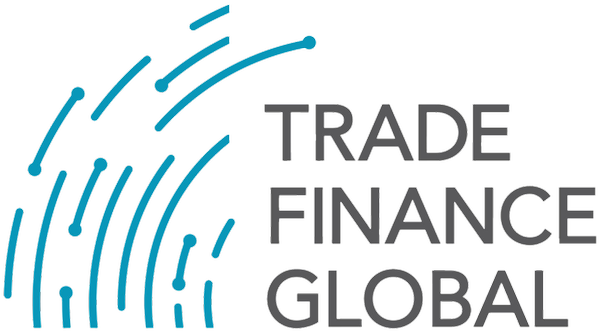- Trade-based money laundering (TBML) claims billions of dollars annually, even resulting in bankruptcies.
- Luckily, over time, some red flags come up repeatedly.
- Technology poses a solution.
While it’s difficult to arrive at an exact figure, it’s widely recognised that, in trade finance, billions are lost each year due to fraudulent practices. High-profile cases like Hin Leong Trading’s bankruptcy and Greensil Capital’s insolvency highlight the vulnerabilities in the trade finance ecosystem.
Hin Leong’s downfall, for example, was allegedly driven by years of hidden losses and the manipulation of documents, which led to massive financial exposures for banks. Similarly, Greensil’s alleged over-reliance on questionable receivables resulted in severe losses for many financial institutions. Cases like these highlight the systemic risks intrinsic to trade finance—particularly when financial institutions rely on paper-heavy processes, manual verification, and trust in transactions.
The problem of TBML: why, who, and how?
Trade finance is inherently complex and involves multiple parties, often across borders. The global nature of trade means transactions often span multiple jurisdictions with varying regulatory frameworks, creating opportunities for fraudsters to exploit loopholes. Additionally, the sheer volume and complexity of trade finance documents, coupled with a historically paper-heavy process, make it difficult to track and verify the accuracy of information. In all of this, the fundamental problem exacerbating the risk of fraud is a lack of transparency and limited visibility into the supply chain.
TBML is especially hard to detect since trade transactions appear legitimate on paper, particularly since banks and other financial intermediaries reviewing trade finance documentation often have limited context into or information on the tangible goods or services involved.
Small and medium-sized enterprises (SMEs) are often the worst hit by fraud and TBML because they lack the sophisticated systems and resources that larger corporations have in place to detect and defend against such risks. SMEs may also rely more heavily on external financing, which exposes them to greater risk when dealing with unfamiliar or fraudulent parties.
Developing economies are also more vulnerable to TBML, as they often have weaker regulatory environments and less robust financial systems, making them easier targets for fraudsters. The lack of infrastructure to support advanced compliance checks increases their exposure to financial crime.
Finally, financial intermediaries – that is, banks and other financial institutions – are a major segment hit badly by fraud. Looking at past fraud cases this pattern is made evident. Moreover, they are also exposed to legal and reputational risks, in the event they do not have adequate checks and controls in place to detect sanctions violations or threat factors using them for channeling laundered proceedings.
TBML hidden in plain sight
As referenced, Hin Leong, a major commodity-trading corporation headquartered in Singapore which collapsed in 2020, was accused of trade financing fraud. News reports around the development indicate that the case against Hin Leong involved around $112 million disbursed by a major Asian bank as payment for two allegedly fabricated oil contracts. Investigators working on the case reported evidence of accumulated derivatives trading losses of about $808 million over a period of 10 years, and that these losses were concealed through the alleged overstatement of derivatives gains. This case has prompted tighter regulations and greater scrutiny in the commodity trading sector to mitigate risks of similar fraud in the future.
Another recent case is that of Agritrade International Pte Ltd, a Singapore-based commodities trading firm. According to this report by Reuters, court documents in a case against the firm showed that at least 20 banks facing losses running into hundreds of millions of dollars accused the commodity trader of fraud. As this article observes, the alleged fraud appeared to revolve around trade financing from multiple lending banks on the same trades with the issuance of multiple bills of lading (BLs) for the same shipment.
As we see from these examples, TBML leverages the complexity of trade to disguise illicit activity. A common method is over-invoicing, where the seller inflates the value of goods, allowing the buyer to transfer excess funds, while under-invoicing allows the seller to help the buyer evade customs duties or taxes.
Another form of fraud is multiple invoicing, where the same shipment is invoiced to several different banks, obtaining more financing than the shipment’s value justifies. There are also phantom shipments, where no goods are shipped, but fraudulent documents are created to justify fund transfers.
To name a few, red flags indicating potential TBML include:
- Inconsistent invoice pricing, especially when prices deviate significantly from market norms.
- Unusual shipping routes that don’t make logistical sense for the type of goods being traded can also signal fraud.
- The presence of unusual clauses in trade documents or instruments such as LCs or guarantees.
- Companies with opaque ownership structures or those that engage in repeated transactions with the same counterparties at varying prices.
- Transactions linked to high-risk jurisdictions or involving vague or incorrect descriptions of goods further heighten the risk of fraud.
The reality is that perpetrators are often one step ahead of the regulators, making detection and prevention an uphill battle.
The solution: Tech in compliance
Technology plays a key role in ensuring the invoicing process is transparent and fair, particularly using models driven by artificial intelligence (AI)/machine learning (ML) or neuro-linguistic programming (NLP). Such solutions play a key role in strengthening compliance as they can automatically detect anomalies in invoice pricing, conduct TBML checks (such as Fair Price checks), detect military/dual-use goods, and cross-check against market values to flag discrepancies.
These systems can also verify that goods descriptions match the physical shipments, to confirm that invoices are accurate and reflect fair market practices. Real-time analysis tools provide further validation by comparing invoice data against global trade databases. This helps ensure that all parties are adhering to proper invoicing standards.
Automation plays a crucial role in preventing fraud in trade finance. By leveraging machine learning, natural language processing, and AI to extract, analyse, and cross-check data from trade documents, banks can significantly reduce the risk of human error and catch discrepancies that may signal fraud. For example, platforms like Cleareye.ai’s ClearTrade® can automatically screen trade finance documents such as bills of lading or letters of credit, identifying inconsistencies in real time.
Furthermore, machine learning algorithms can better detect suspicious patterns and anomalies in trade documentation. They flag potential red flags in real time, allowing banks to address risks before transactions are completed. This not only reduces the time and cost associated with manual checks but also minimises the risk of fraudulent documents slipping through the cracks.
Banks and corporates can greatly benefit from the introduction of technology to shield them from TBML and fraud. Cloud-based solutions provide banks with access to advanced compliance tools, without the need for large investments in IT infrastructure. This is only possible, however, with solutions with robust encryption standards at every level of data storage and encryption: otherwise, cybersecurity risks could even be amplified.
With ClearTrade®, for instance,all client data is encrypted using advanced encryption protocols, ensuring that sensitive information is protected from unauthorised access. Such mechanisms are assisted by role-based access control, which ensures that users only have access to the data they need, thereby minimising the risk of internal breaches.
More work to do
Geopolitical tensions and shifts in global trade patterns are likely to influence the next direction of fraud and TBML. Fraudsters may exploit regions with weakened regulatory frameworks or unstable governance to launder money or evade sanctions.
Economic warfare, such as the sanctions on Russian oil, is driving new fraud tactics in trade finance, particularly through ship-to-ship transfers on the high seas. These transfers allow sanctioned entities to obscure the origin of cargo by turning off vessel transponders or manipulating shipping documentation, making it harder for financial institutions to detect illicit activities. To counter these evolving risks, solutions like ClearTrade® use vessel monitoring, container tracking, and bill of lading validation to flag suspicious transactions. By combining AI with global shipping data, ClearTrade® can also identify red flags such as unusual trade routes or misreported goods. Cleareye.ai is developing a Real-Time Compliance Monitoring platform that uses AI for risk assessment across Trade Finance and Core Trade operations, offering features like AML monitoring, sanctions screening, fraud detection, and vessel behaviour analysis. The platform aims to provide comprehensive global risk coverage while ensuring compliance with international and local regulations for banks’ trade operations.





























